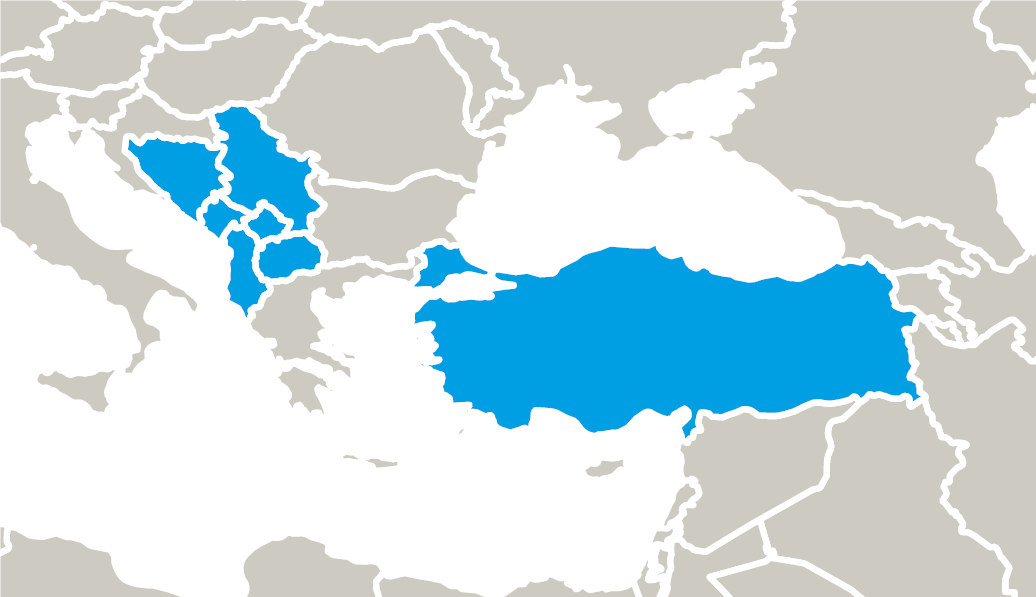The South East Europe region includes those countries to the south of Eastern Europe that are not part of the EU, as well as Turkey. With a population of 102 million - over 80% of which live in Turkey - the region is at the crossroads of people and goods between Eastern and Western as well as Northern and Southern Europe. Third largest emerging economy behind India and China, the G-20 member Turkey is in a customs union with the EU and fully integrated into international trade. Progress is less evenly spread in the rest of the region, although all countries are seeking to join the EU and to adopt its standards. Turkey's per capita income - one tenth of that of Switzerland - is comparable to that of Serbia or Montenegro.
Switzerland has concluded investment protection and double taxation agreements with all countries of South Eastern Europe as well as with Turkey. With the exception of Kosovo, there are free trade agreements in place between the EFTA countries and all countries of the region that are also part of the Pan-Euro-Mediterranean area of diagonal cumulation (Paneuromed).
In the region's bilateral trade with Switzerland, Turkey has the strongest share (75%), followed by Serbia (10%) and Bosnia and
Herzegovina (5%). Most of the countries share a certain tradition in the metal, automotive (parts and equipment manufacturing), textile and food processing sectors. In recent years, trade in services, particularly in information technology, has grown considerably alongside tourism, although the pandemic has temporarily reduced activity in these sectors.






